Soccer socks are worn by casual and professional players alike.
They are a compulsory piece of equipment for those competing at the highest level of the sport because of the way in which they keep shin guards – the objects meant to shield and protect the leg from hits and bruises – in place.
Now it makes sense to ask what material soccer socks are made up of, particularly if they’re able to do a fine job of providing support for shin guards and covering up the leg against the cold weather.
In this article, we’ll be taking a closer look at what fabrics are used in the construction of soccer socks.
From the provision of that information, you’ll be much more knowledgeable about what makes a good sock for the sport and be able to buy a good quality product in this category when needed.
So, let’s get down to business with a quick answer summary.
Soccer socks are typically made of materials such as nylon, polyester, spandex, cotton and other synthetic fibers like olefin, polyamide and profilen.
And now for the in-depth version…
Which materials are used to make soccer socks?
The top manufacturers such as Nike, Adidas and Puma tend to vary the material composition of soccer socks as and when they see fit.
You’ll find that this is especially true when they want socks to have certain features like:
- Breathability to keep the legs and feet dry within the shoe;
- Minimal shin guard distractions;
- Blister prevention; and
- Additional ankle support
At this juncture, we’re going to break down the benefits each material is able to provide, because it’s so important for players to choose soccer socks that are of the right fabric makeup.
First up, we have…
1. Nylon
Nylon is a material that is commonly used to make soccer socks because of its robust nature.
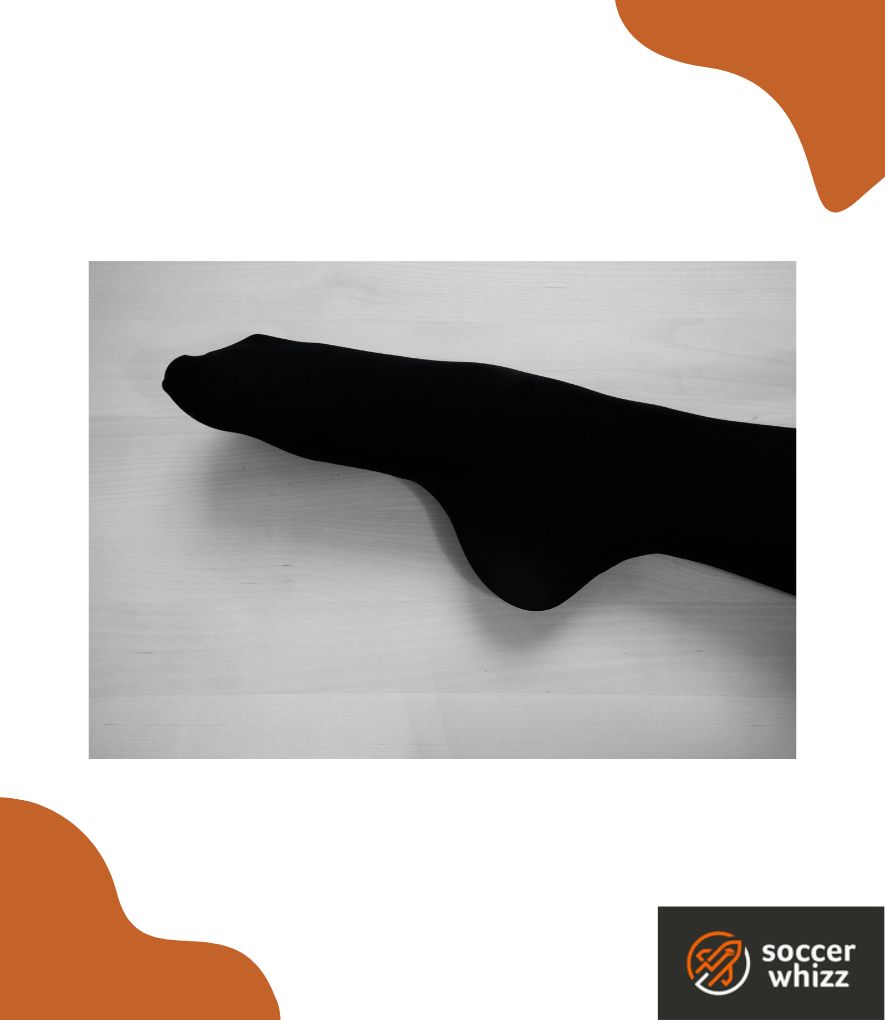
During a soccer game, a player is likely to stretch their legs on multiple occasions, particularly when it comes to things like interceptions and sliding tackles.
Every inch counts and being able to get to the ball first means these athletes put their bodies on the line to ensure that they secure possession for their team.
This can come at the expense of soccer socks that aren’t built to withstand such wear and tear.
Nylon is therefore well-suited as a soccer sock material because its inherent toughness as a fabric can withstand the physical rigors of the sport.
You get fantastic elastic recovery with this fabric, meaning that it can stretch to its limits without losing shape.

Additionally, nylon is a strong textile fiber that has excellent tear and abrasion resistance, so you’re unlikely to find gaping holes in soccer socks made from this material even after significant wear.
Big consumer brands also love making use of nylon for soccer socks because it has a relatively low cost of manufacture.
Although it was more expensive than silk when it was first developed, the fabric had a rapid drop in price in subsequent years, especially because of how easy and inexpensive it was to mix with other materials.
2. Polyester
Another popular material used in the production of soccer socks is our good old friend – polyester!
If you’ve come across Nike socks that are branded with the “Dri-fit” tagline, then you should know that the fabric that gives these socks their breathability and moisture wicking capability is polyester.
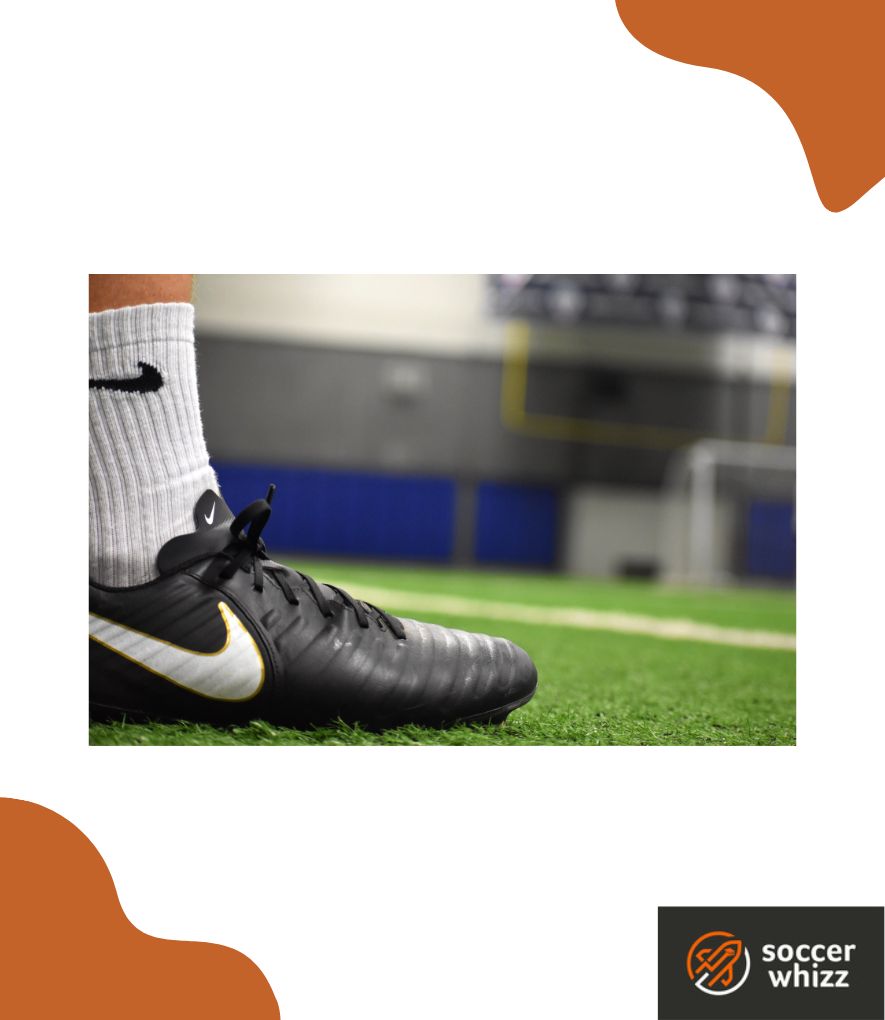
Unlike nylon, polyester is able to absorb moisture comparatively better, which is great for players who tend to sweat a lot through their feet as they compete.
More specifically, polyester has what are called low moisture regain properties.
What this means is that the fabric absorbs moisture very effectively, but it doesn’t retain it as any liquid build up quickly evaporates, ultimately leaving garments dry.
This benefit makes polyester an ideal material for sportswear manufacturers to source, in addition to the fact that it’s also more economically viable to acquire and develop when compared against other synthetic fibers like nylon.
3. Spandex
The third material that soccer socks tend to be made up of is spandex.
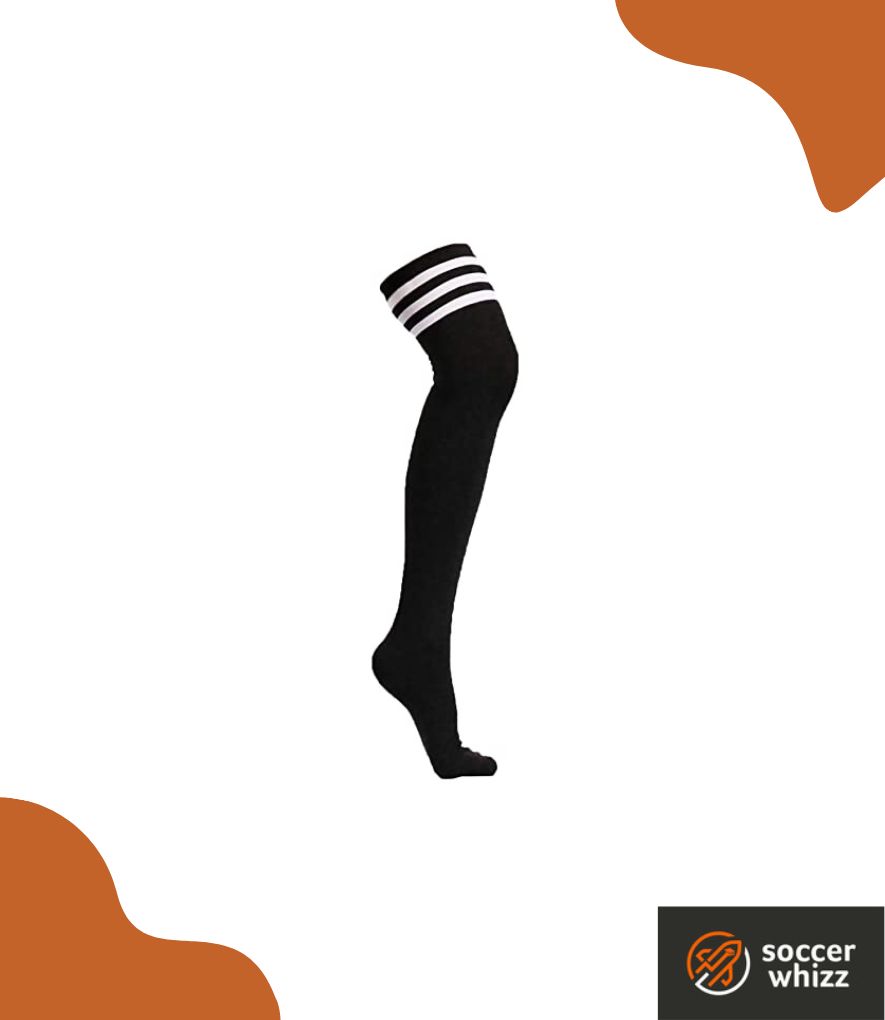
It certainly isn’t as commonly used and the percentage composition that the fiber tends to make up in your standard pair of soccer socks isn’t very high.
Another reason why you may not be too familiar with it is because various listings that you see on digital retail stores and online marketplaces refer to spandex in some of its different forms, using names such as lycra or elastane within their product descriptions.
Nonetheless, spandex is a good material for soccer socks even though it isn’t a fabric you’d normally associate with this piece of equipment.
People who work manual labor jobs in manufacturing plants or retail warehouses like Amazon can attest to the fact that spandex gloves are really durable.
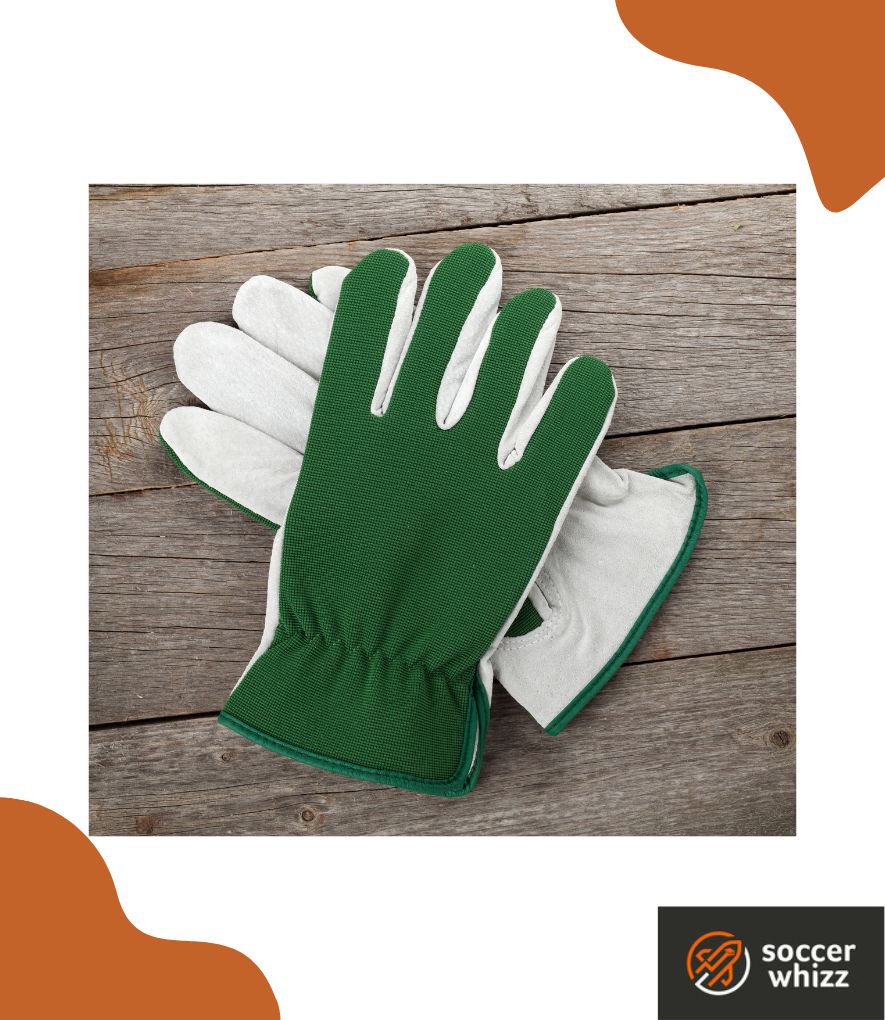
Likewise, spandex performs well when used in soccer socks because of its ability to stretch five to eight times beyond its original shape without losing that initial form factor.
The fabric is usually added to a nylon or polyester sock makeup to aid with tension and resistance, because some of the physical forces exerted in soccer games can lead to tears if the material isn’t strong enough.
On a separate note, the comfort factor that spandex contributes to soccer socks cannot be ignored.
Here’s a good quote which sums this up:
“The true draw to cotton spandex over other materials for workout clothing is its comfort. Beyond breathability and flexibility, cotton spandex has a better physical texture than the synthetic-feeling materials people often rely on for athletic wear.”
Source – Express Knit Incorporated
4. Cotton
Now here’s a name you’ve probably heard a million times!
Cotton is used in soccer socks, although the very best quality ones don’t have this fabric making up the vast majority of its material composition.
And there’s very good reason for that.
To begin with, cotton loses its shape through stretching and shrinkage a lot easier than the aforementioned materials, making it a poor use choice for soccer socks.
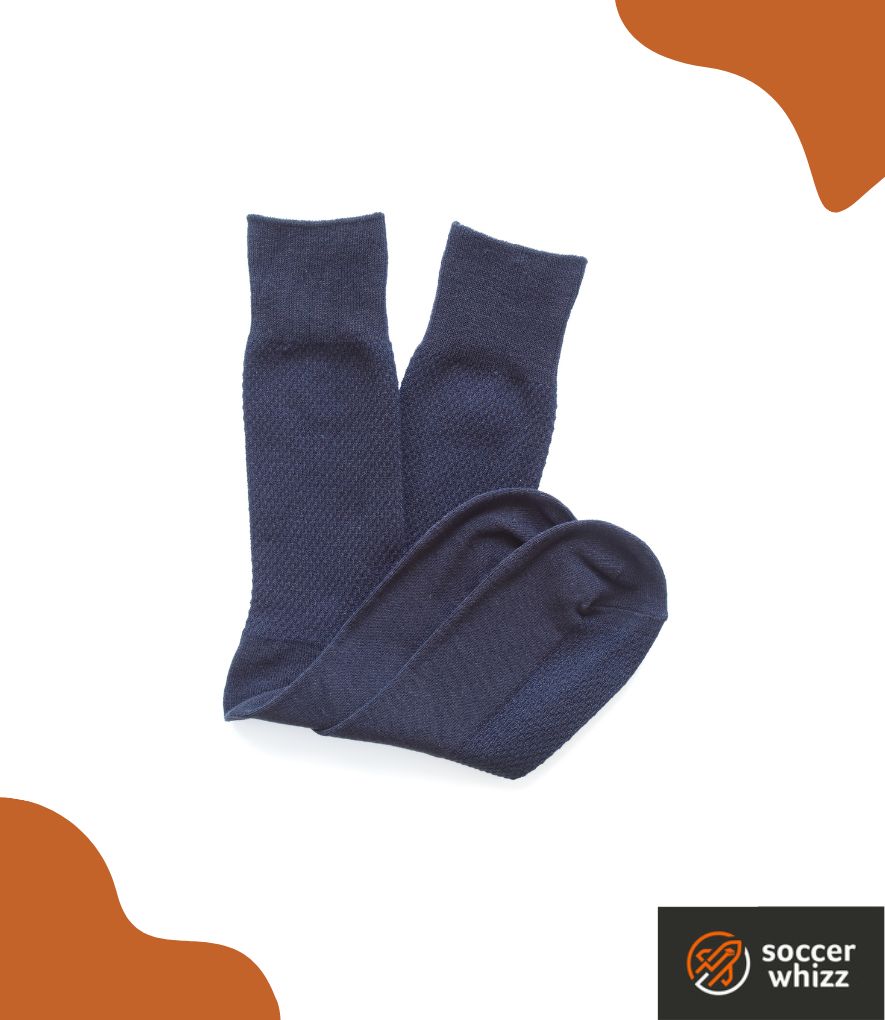
With the rules of the game stipulating that shin guards must be entirely covered by soccer socks, cotton is far from ideal.
Pulling the fabric up to knee-height and beyond would cause the socks to lose their tightness, which in itself is needed to keep those shin guards secure in the first place.
Another drawback of cotton in soccer applications is the fact that the material is much coarser in nature, which means that you have a higher chance of picking up aggravating blisters when wearing soccer socks of this fabric make up.
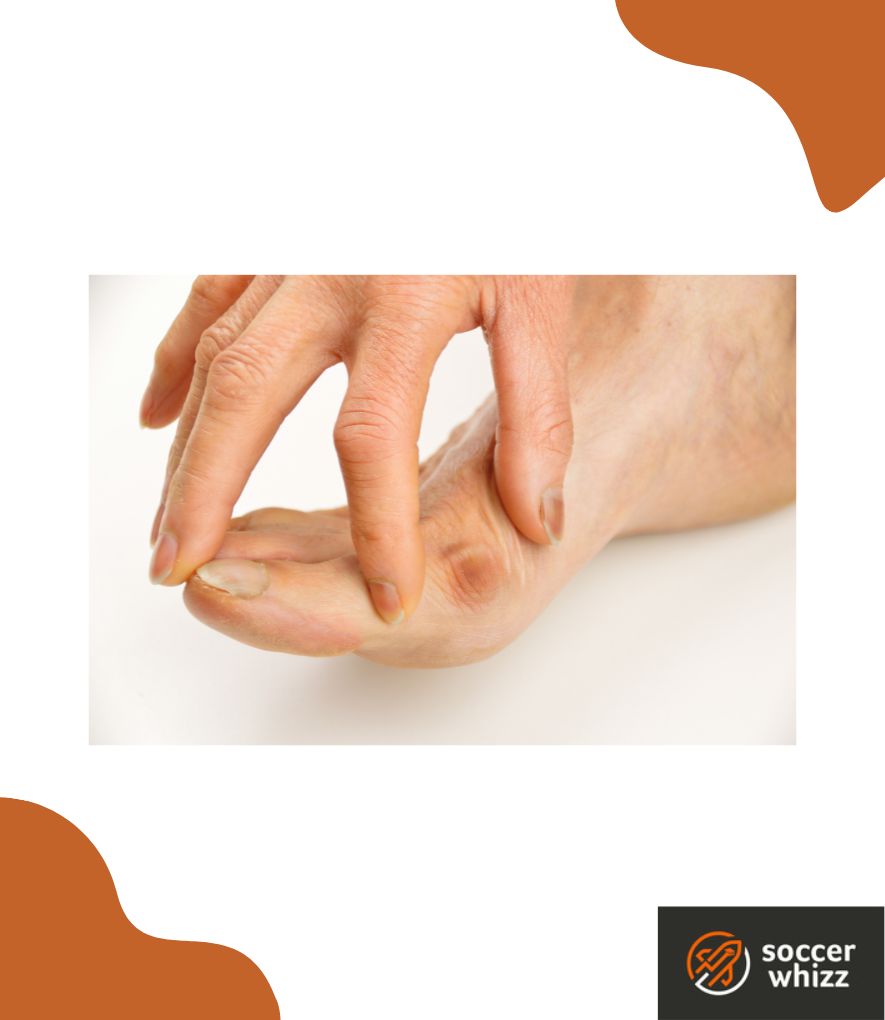
To make things even worse, cotton absorbs moisture at a faster rate than any of the other fabrics mentioned.
It doesn’t offer the maximum level of breathability which soccer players need, because its significant absorption and retention of water means that a lot of moisture gets trapped within the fabric instead of evaporating out, making it a perfect recipe for a fungal infection like athlete’s foot.
Our overall advice to you would be to avoid any soccer socks comprised of 100% cotton material, as they’re bound to give you an unpleasant experience if you wear them for any sort of practice session or competitive match.
5. Other synthetic fibers
The list of materials used in the production of soccer socks certainly doesn’t end with cotton.
As a matter of fact, there are other synthetic fibers that sometimes make up the material composition of these items.
Such synthetics include:
- Olefin – allows easy moisture pass-through which aids overall breathability
- Polyamide – a soft synthetic fiber that makes soccer socks more comfortable to wear
- Profilen – the low friction coefficient of this fabric helps immensely with blister prevention for soccer sock wearers
What material is best for soccer socks?
It’s definitely hard to judge which material is most ideally suited for soccer socks.
Even though we can be sure that cotton should come at the bottom of your priority list, the other materials like polyester, nylon and spandex each offer a unique set of advantages that must be taken into account.
But if we had to decide on an overall winner, then that would likely be polyester because it ticks the boxes of being:
- Resistant to rough play that occurs in soccer games;
- Breathable due to its good moisture absorption and lack of retention; and
- Comfortable to wear
Closing thoughts
So, there you have it!
We’ve covered what materials make up soccer socks so that you can be more informed and make better purchasing decisions.
If you’re ready to get your wallet out after reading this article, then it may be worth checking out our blog posts on:
- The finest Nike soccer socks;
- The best adidas soccer socks to wear; and
- Our comprehensive roundup of the best soccer sock options
If you enjoy the content that I create and would like to buy me a coffee, then I’d really appreciate it!
Any money that I earn through this donation will be re-invested into more content for this website.
Additionally, by sending in a donation you’ll also receive a copy of my recently released 190+ page eBook on Soccer Ball Care, as well as be subscribed to our mailing list where you’ll be regularly informed on the latest developments concerning the Soccer Whizz blog.
- Future Icons: Europe’s Emerging Midfield Maestros Set for Glory - December 4, 2023
- Kickstarting a Revolution: How Soccer Transformed the United States Over the Last Four Years - October 7, 2023
- 4-1-4-1 Soccer Formation [Analysis] - September 23, 2023

